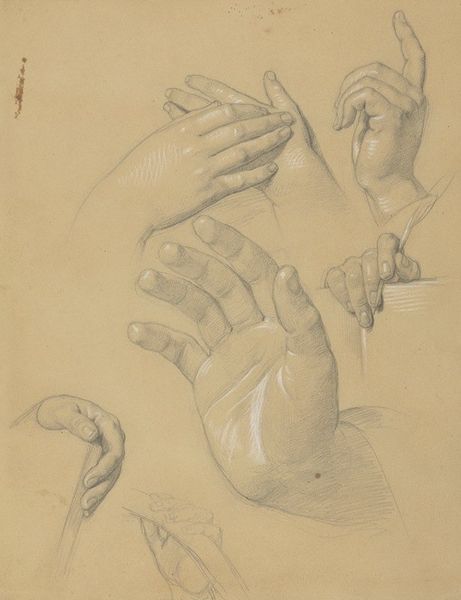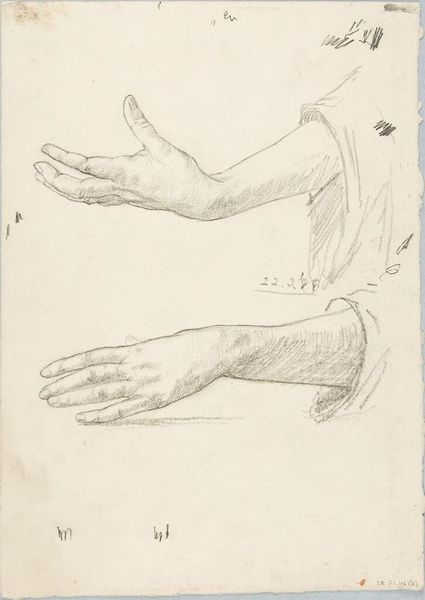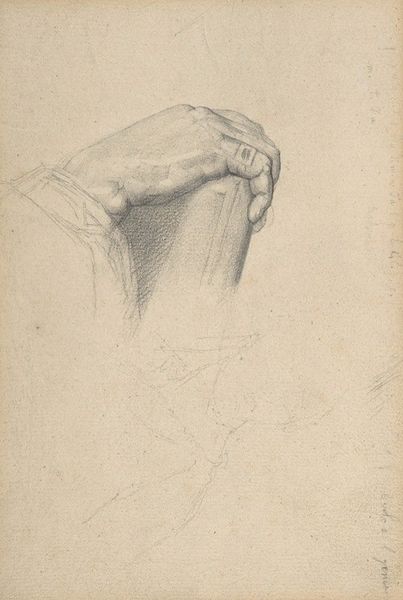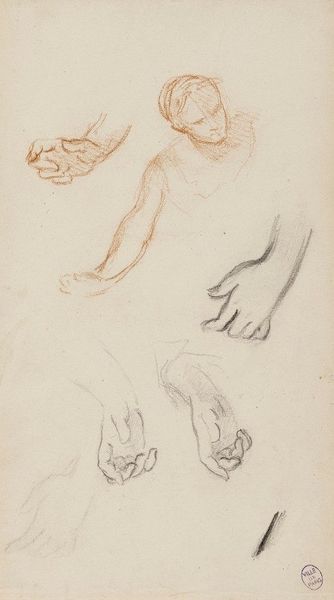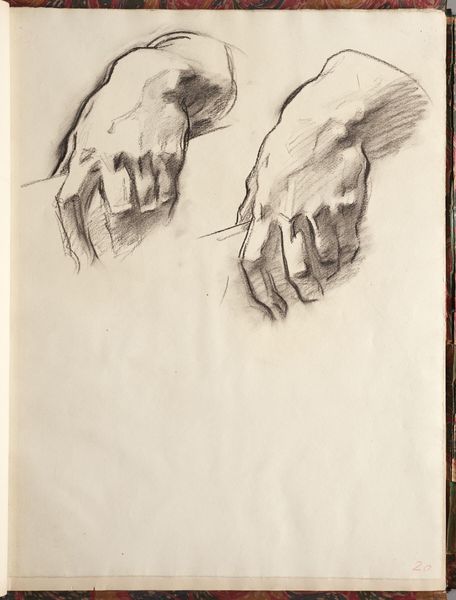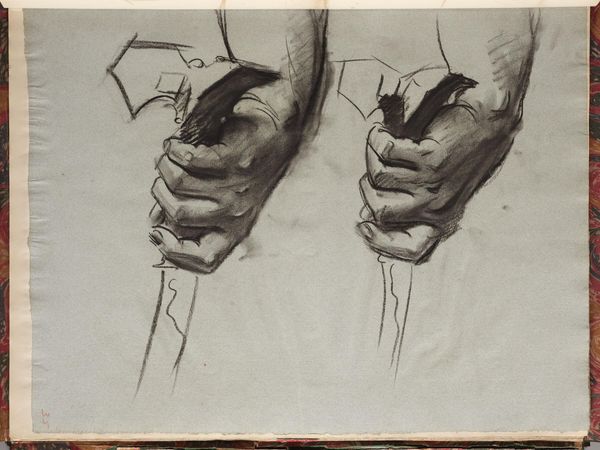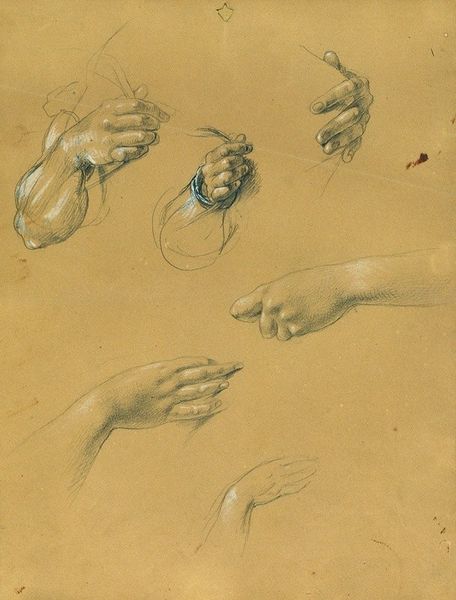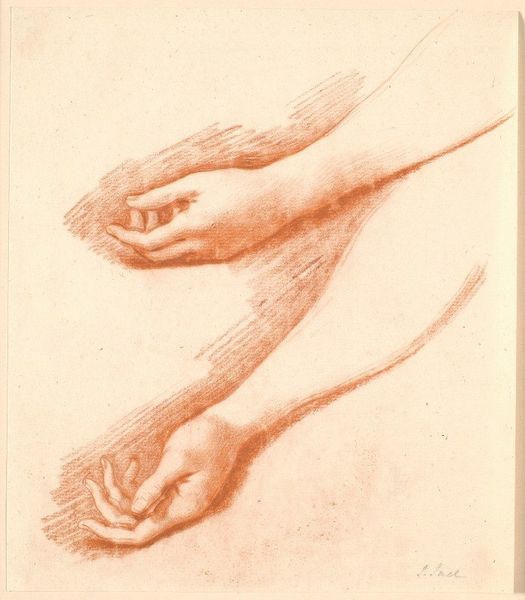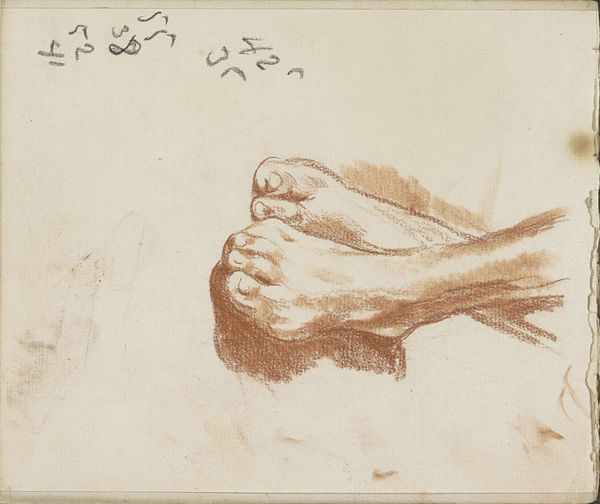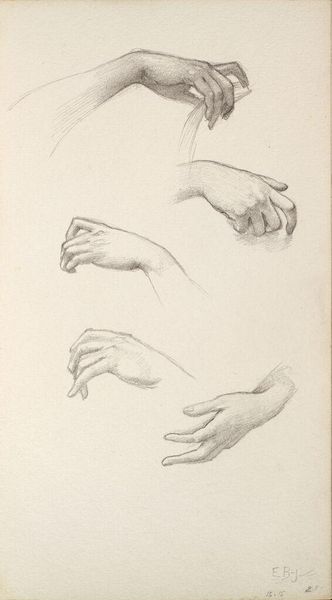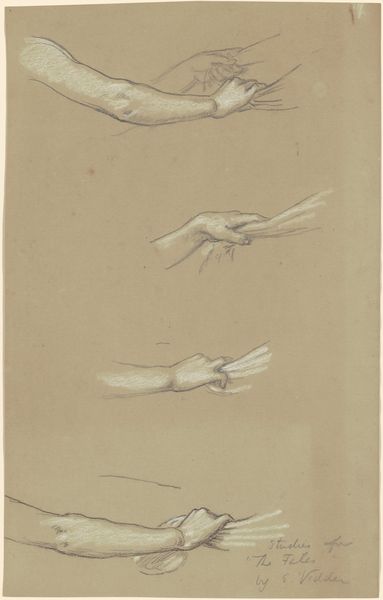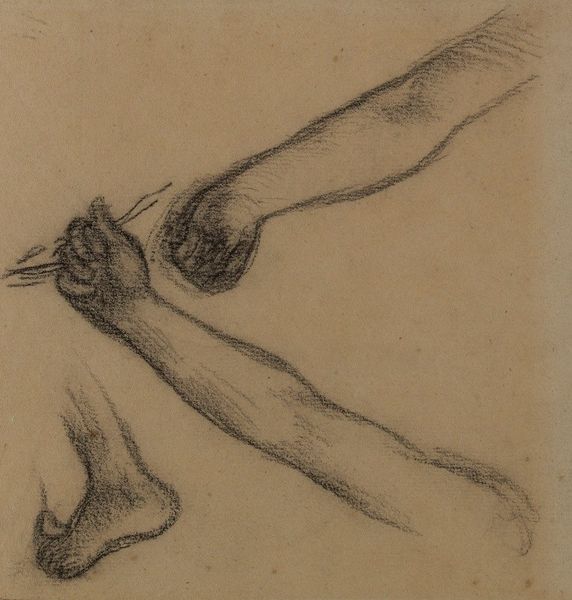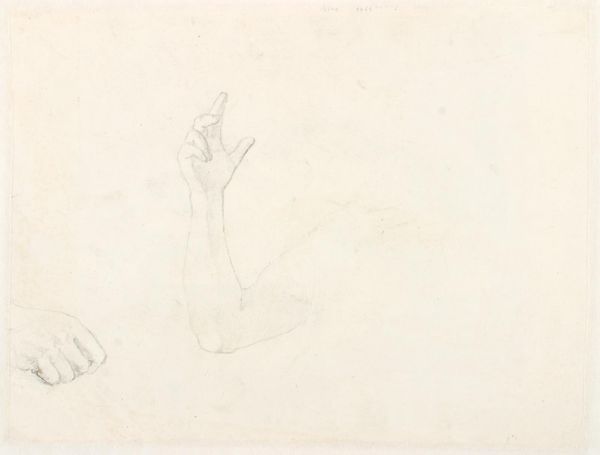
drawing, pencil
#
portrait
#
drawing
#
figuration
#
pencil
#
academic-art
Copyright: Public Domain: Artvee
Curator: My first thought is how fragile yet commanding hands can appear in the right light. Editor: Indeed! We're looking at "Studies of the Hand of St. Matthias and High Priests," a pencil drawing completed between 1866 and 1867 by Józef Simmler. These are, quite literally, studies for a larger, more complex work. Curator: One immediately notices the artist’s attention to form and light. The textures achieved solely through the pencil are rather extraordinary; particularly observe how the cross-hatching defines the muscles and bone structure. Editor: Knowing Simmler, a figure deeply enmeshed in the cultural nationalism of his time, these studies reveal so much about the role of preparatory sketches in academic painting of the 19th century. Hand gestures, deeply symbolic, played key parts in conveying emotional narratives within larger history paintings. Curator: It's fascinating how the starkness of the medium enhances the raw expressive capability. We see the hands in almost cinematic isolation; divorced from a greater context. It creates a remarkable concentration. Editor: Context shapes our interpretation, though. The late 1860s witnessed an era where art, especially in partitioned Poland, sought to uphold cultural identity. Religious themes—saints, priests—resonated profoundly, acting as touchstones for shared cultural memory against foreign rule. Curator: Undoubtedly. Even without that explicit cultural knowledge, one intuits an almost tactile sense of reverence. Look at the prayerful alignment in the primary study. Simmler captures not just likeness but intention. The hands seem to almost converse among themselves, almost telling different stories in each pose. Editor: And consider where this drawing may have fit within Simmler's wider body of work. It serves as evidence to understand academic art training where artists were schooled to methodically build towards finished artworks and emphasize historical accuracy as they simultaneously conveyed strong ethical undertones through figuration. Curator: Seeing this collection of poses, it becomes apparent this work stands on its own regardless of how it was implemented later. Editor: Absolutely, understanding art’s evolution and reception within societal movements allows for a richer interaction that values process. Curator: Yes, the artist's ability to transmit profound narratives speaks of a more lasting message that invites examination for future generations.
Comments
No comments
Be the first to comment and join the conversation on the ultimate creative platform.
